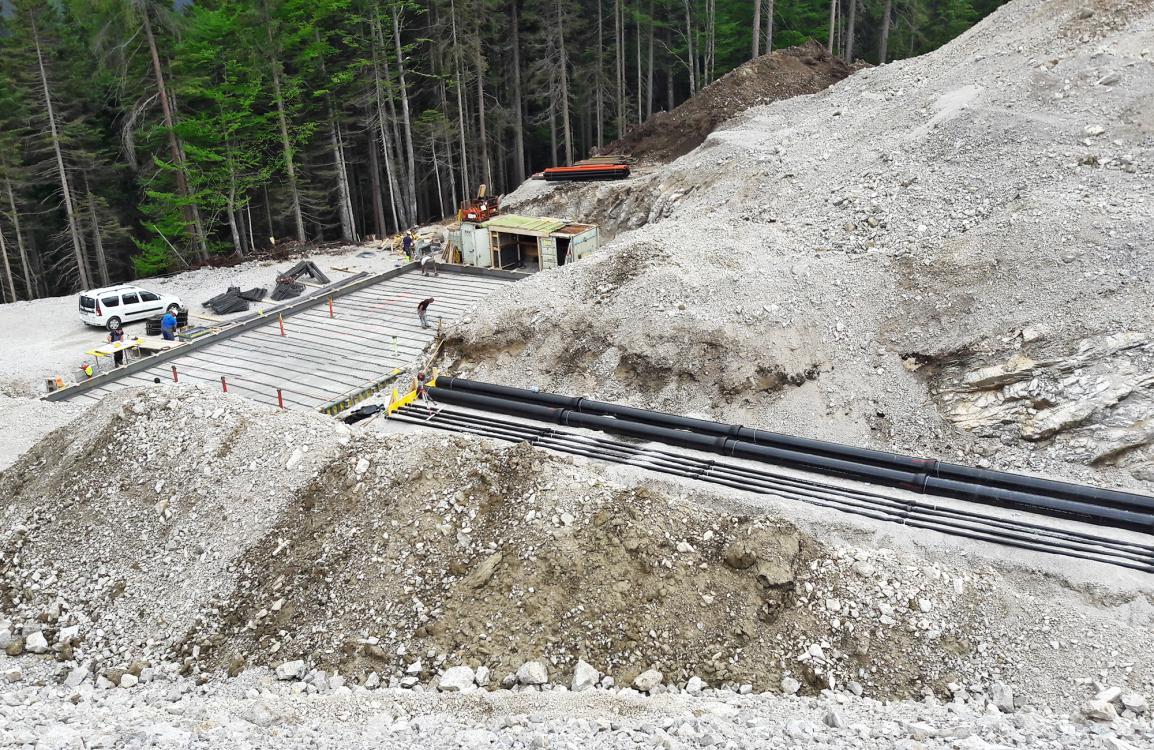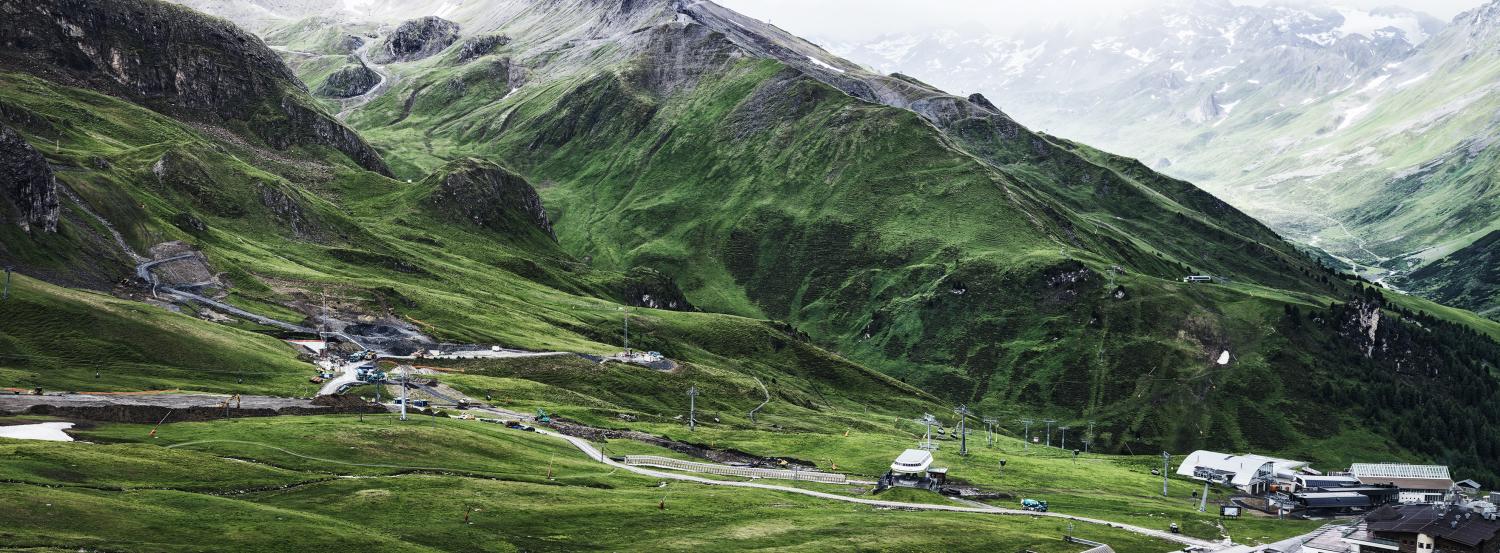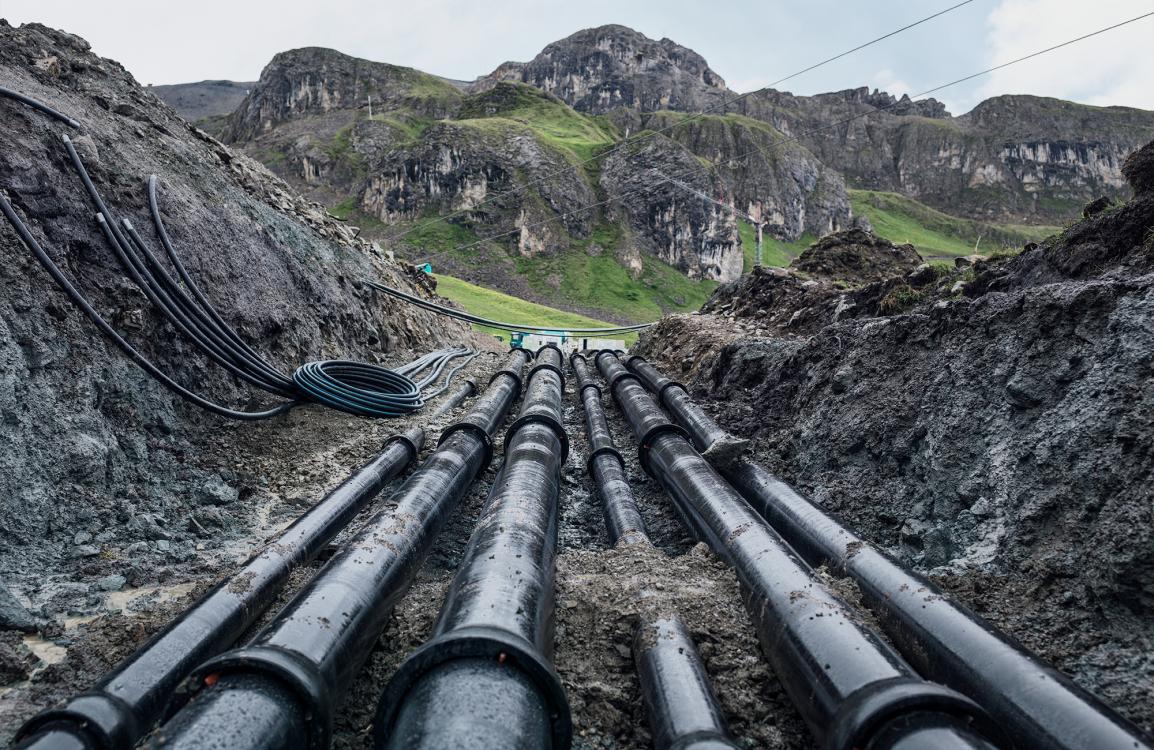Über 30 Jahre Erfahrung mit duktilen Guss-Rohrsystemen für Beschneiungsanlagen
In den schneearmen Wintern der 1980er wuchs der Bedarf nach Beschneiungsanlagen in den Alpen. Betreiber und Planer von Beschneiungsanlagen waren auf der Suche nach einem robusten, verlässlichen und einfach zu handhabenden Rohrsystem, das ohne Probleme Drücken bis zu 100 bar standhält. Diese Kriterien wurden und werden bis heute von duktilen Guss-Rohrsystemen mit längskraftschlüssigen Muffen-Verbindungen erfüllt. Bereits im Jahr 1986 stiegen die Tiroler Rohre GmbH in den Bereich der Beschneiungsanlagen ein. Doch auch nach 30 Jahren schreitet die Erweiterung und die Erneuerung der Beschneiungsanlagen in den Alpen weiter voran. Dies zeigen zwei aktuelle Projekte in den Gemeinden Seefeld und Ischgl in Tirol, bei denen duktile Gussrohre mit BLS®/VRS®-T Muffen-Verbindung der Tiroler Rohre GmbH eingesetzt werden.
Schneesicherheit für die Nordischen Skiweltmeisterschaften 2019
Seefeld in Tirol wurde im Jahr 2014 bereits zum vierten Mal als Austragungsort für die FIS Nordischen Skiweltmeisterschaften (FIS – Fédération Internationale de Ski) benannt. Bereits jetzt werden die Beschneiungsanlagen ausgebaut, damit in knapp zwei Jahren der Schnee für das Großevent gesichert ist. Besonders beeindruckend ist hierbei die Errichtung eines neuen Beschneiungsteichs am Gschwandkopf, der die Basis für die lückenlose Beschneiung der gesamten Loipenstrecke bildet. Für die Befüllung des Speicherteichs, für die Teichleitungen sowie für die Verteilung des Wassers zu den Schneekanonen werden ca. 3.300 Laufmeter duktile Gussrohre in den Nennweiten DN 80, DN 200, DN 250 sowie DN 400 der Tiroler Rohre GmbH eingesetzt. Im Juni 2017 wurde mit den Bauarbeiten für den Um- und Ausbau der beschneiungstechnischen Infrastruktur begonnen. Das Bauprojekt wird noch in den kommenden Monaten fertiggestellt, um auch bei bevorstehenden Langlauf-Veranstaltungen wie dem FIS Rennen, dem Kaiser Maximilian Lauf, der Österreichischen Meisterschaft sowie der „VOR WM“ den Athleten eine Kostprobe für die WM 2019 bieten zu können.

Bild 1:
Befüll- und Entnahmeleitungen an der zukünftigen Pumpstation

Bild 2:
Befüll- und Entnahmeleitungen am Beschneiungsteich Gschwandkopf
Neuer Speicherteich Viderböden in Ischgl
Im Ischgler Skigebiet auf über 2.300 m Seehöhe wird seit Mai an dem neuen Speicherteich Viderböden gearbeitet.
Die Baustelle wird auch „Herztransplantation“ genannt, da das Herzstück der Beschneiungsanlage – der Speichersee – komplett verlegt werden muss.

Bild 3:
Panoramaaufnahme der Großbaustelle rund um den neuen Speicherteich Viderböden im Skigebiet von Ischgl, Tirol
Der bestehende Speicherteichstandort samt dem Ober- und vor allem dem Unterhang sind permanent in Bewegung und wurde von der Behörde mit Ende der Wintersaison 2016/17 ein Betrieb nicht mehr genehmigt, weshalb man sich um einen neuen Standort umsehen musste. Dieser sollte möglichst nahe am bisherigen Standort liegen, um die Leitungen ohne weite Wege anzubinden und um von dort das Wasser in das weit verzweigte Netz der bestehenden Anlage ohne unnötige Grabungsarbeiten einleiten zu können.
Die Anbindung der neuen Zentrale an das bereits bestehende Beschneiungssystem wird mit Rohren der Tiroler Rohre GmbH in den Nennweiten DN 80, DN 150, DN 200, DN 250, DN 300 sowie DN 400 ermöglicht. Abgeschlossen soll die „Operation“ mit einem Investitionsvolumen von ca. 4,5 Mio. € noch in den nächsten Monaten, damit die Beschneiungsanlage zum Start der Schneisaison einsatzbereit und funktionsfähig ist.

Bild 4:
Einbau der Befüll- und Entnahmeleitungen im hochalpinen Gelände
